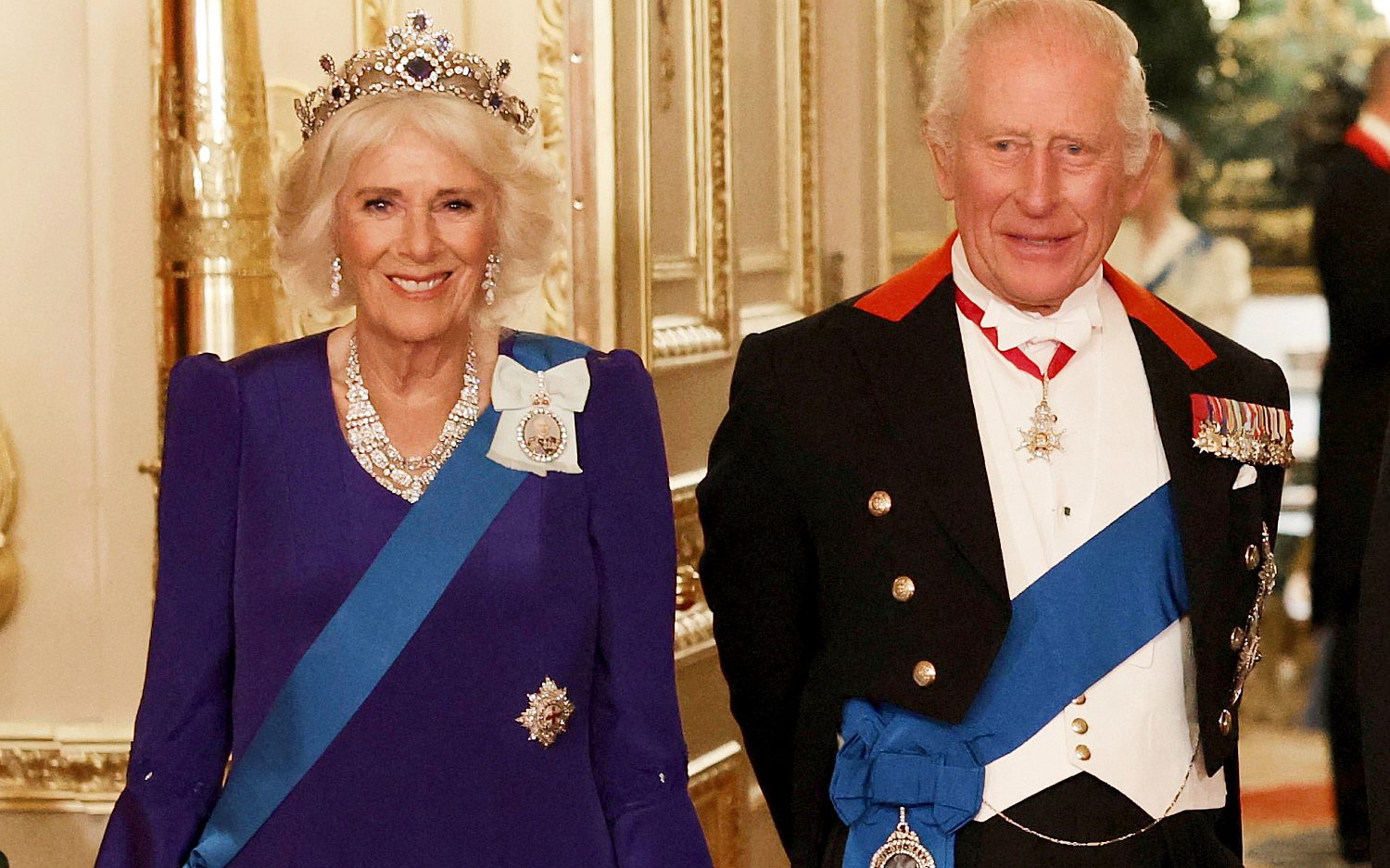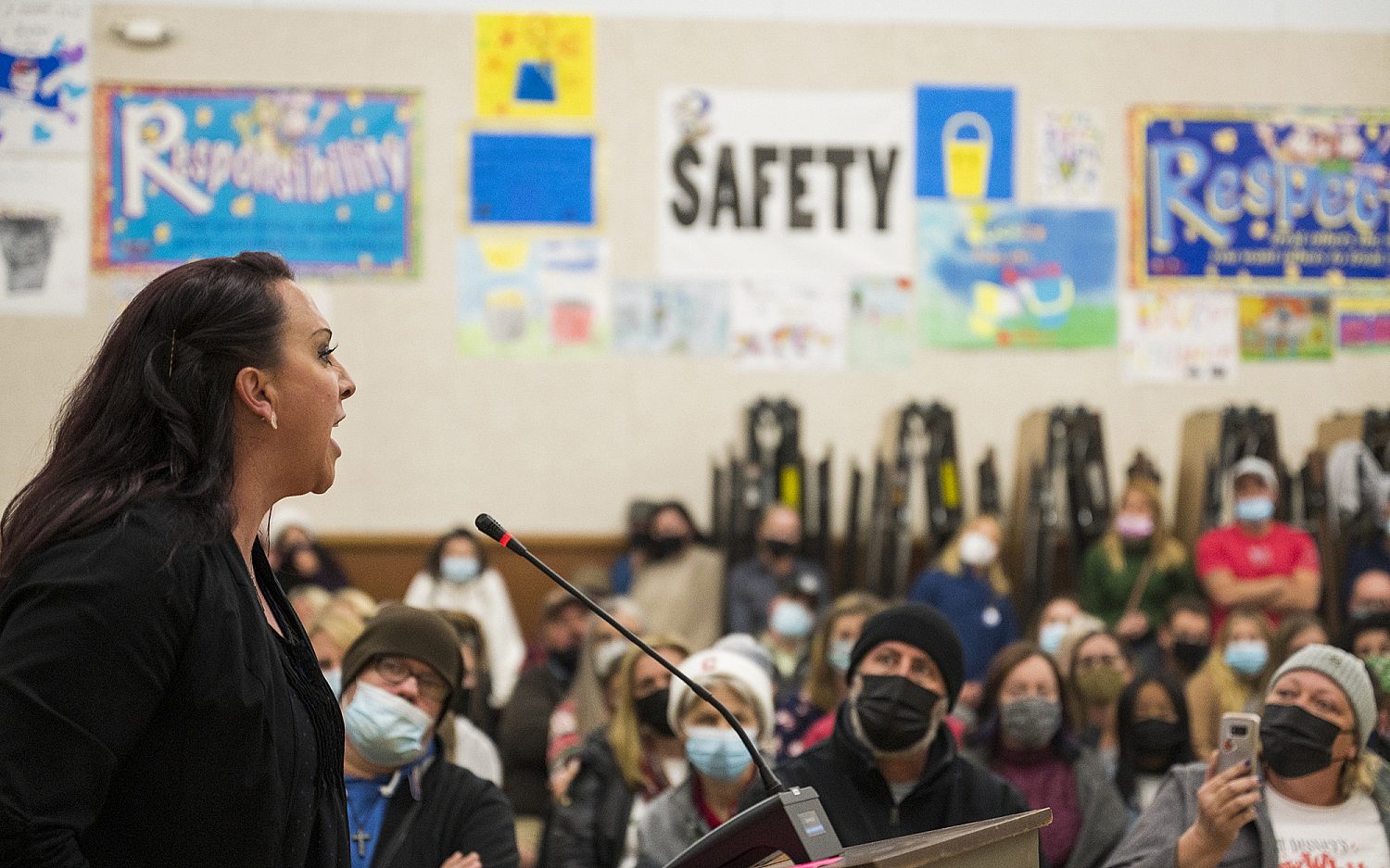The harvest of shame
In 1999, WORLD looked at how the government’s lifting of the fetal-tissue research ban turned human-remains trafficking into big business
Editor’s note: Because of the current controversy surrounding Planned Parenthood and the harvesting and selling of body parts from aborted babies, we take you back into our archives for the following article written by Lynn Vincent on how the Clinton administration’s lifting of the ban on fetal-tissue research in 1993 led to a growing business of trafficking aborted human remains. This article originally appeared in the Oct. 23, 1999, issue of WORLD Magazine and is republished here as part of our Saturday Series.
WARNING: This story contains some graphic detail.
As Monday morning sunshine spills across the high plains of Aurora, Colo., and a new workweek begins, fresh career challenges await Ying Bei Wang. On Monday, for example, she might scalpel her way through the brain stem of an aborted 24-week pre-born child, pluck the brain from the baby’s peach-sized head with forceps, and plop it into wet ice for later shipment. On Tuesday, she might carefully slice away the delicate tissue that secures a dead child’s eyes in its skull, and extract them whole. Ying knows her employer’s clients prefer the eyes of dead babies to be whole. One once requested to receive four to 10 per day.
Although she works in Aurora at an abortion facility called the Mayfair Women’s Center, Ying is employed by the Anatomic Gift Foundation (AGF), a Maryland-based nonprofit. AGF is one of at least five U.S. organizations that collect, prepare, and distribute to medical researchers fetal tissue, organs, and body parts that are the products of voluntary abortions.
When “Kelly,” a woman who claimed to have been an AGF “technician” like Ying, approached Life Dynamics in 1997, the pro-life group launched an undercover investigation. The probe unearthed grim, hard-copy evidence of the cross-country flow of baby body parts, including detailed dissection orders, a brochure touting “the freshest tissue available,” and price lists for whole babies and parts. One 1999 price list from a company called Opening Lines reads like a cannibal’s wish list: Skin $100. Limbs (at least two) $150. Spinal cord $325. Brain $999 (30 percent discount if significantly fragmented).
The evidence confirmed what pro-life bioethicists have long predicted: the nadir-bound plummet of respect for human life—and the ascendancy of death for profit.
“It’s the inevitable logical progression of a society that, like Darwin, believes we came from nothing,” notes Gene Rudd, an obstetrician and member of the Christian Medical and Dental Society’s Bioethics Commission. “When we fail to see life as sacred and ordained by God as unique, this is the reasonable conclusion … taking whatever’s available to gratify our own self-interests and taking the weakest of the species first … like jackals. This is the inevitable slide down the slippery slope.”
In 1993, President Clinton freshly greased that slope. Following vigorous lobbying by patient advocacy groups, Clinton signed the National Institutes of Health (NIH) Revitalization Act, effectively lifting the ban on federally funded research involving the transplantation of fetal tissue. For medical and biotech investigators, it was as though the high government gate barring them from Research Shangri-La had finally been thrown open. Potential cures for Parkinson’s, AIDS, and cancer suddenly shimmered in the middle distance. The University of Washington in Seattle opened an NIH-funded embryology laboratory that runs a round-the-clock collection service at abortion centers. NIH itself advertised (and still advertises) its ability to “supply tissue from normal or abnormal embryos and fetuses of desired gestational ages between 40 days and term.”
But, this being the land of opportunity, fetal-tissue entrepreneurs soon emerged to nip at NIH’s well-funded heels. Anatomic Gift Foundation, Opening Lines, and at least two other companies—competition AGF representatives say they know of, but decline to name—joined the pack. Each firm formed relationships with abortion centers. Each also furnished abortionists with literature and consent forms for use by center counselors in making women aware of the option to donate their babies’ bodies to medical science. According to AGF executive director Brent Bardsley, aborting mothers are not approached about tissue donation until after they’ve signed a consent to abort.
Ironically, it is the babies themselves that are referred to as “donors,” as though they had some say in the matter. Such semantic red flags—and a phalanx of others—have bioethicists hotly debating the issue of fetal-tissue research: Does the use of the bodies of aborted children for medical research amount to further exploitation of those who are already victims? Will the existence of fetal-tissue donation programs persuade more mothers that abortion is an acceptable, even altruistic, option? Since abortion is legal and the human bodies are destined to be discarded anyway, does it all shake out as a kind of ethical offset, mitigating the abortion holocaust with potential good?
While the ethical debate rages in air-conditioned conference rooms, material obtained by Life Dynamics points up what goes on in abortion center labs: the cutting up and parting out of dead children. The fate of these smallest victims is chronicled in more than 50 actual dissection orders or “protocols” obtained by the activist group. The protocols detail how requesting researchers want baby parts cut and shipped: “Dissect fetal liver and thymus and occasional lymph node from fetal cadaver within 10 [minutes of death].” “Arms and legs need not be intact.” “Intact brains preferred, but large pieces of brain may be usable.”
Most researchers want parts harvested from fetuses 18 to 24 weeks in utero, which means the largest babies lying in lab pans awaiting a blade would stretch 10 to 12 inches—from your wrist to your elbow. Some researchers append a subtle “plus” sign to the “24,” indicating that parts from late-term babies would be acceptable. Many stipulate “no abnormalities,” meaning the baby in question should have been healthy prior to having her life cut short by “intrauterine cranial compression” (crushing of the skull).
On one protocol dated 1991, August J. Sick of San Diego–based Invitrogen Corporation requested kidneys, hearts, lungs, livers, spleens, pancreases, skin, smooth muscle, skeletal muscle, and brains from unborn babies of 15–22 weeks gestational age. Sick wanted “5–10 samples of each per month.” WORLD called Mr. Sick to verify that he had indeed ordered the parts. (He had.) When WORLD pointed out that Invitrogen’s request of up to 100 samples per month would mean a lot of dead babies, Sick—sounding quite shaken—quickly aborted the interview.
Many of the dissection orders provide details of research projects in which the fetal tissue will be used. Most, in the abstract, are medically noble, with goals like conquering AIDS or creating “surfactants,” substances that would enable premature babies to breathe independently.
Other research applications are chilling. For example, R. Paul Johnson from Massachusetts’ New England Regional Primate Research Center requested second-trimester fetal livers. His 1995 protocol notes that the livers will be used ultimately for “primate implantation,” including the “creation of human-monkey chimeras.” In biology, a chimera is an organism created by the grafting or mutation of two genetically different cell types.
Another protocol is up-front about the researchers’ profit motive. Systemix, a California-based firm, wanted aborting mothers to know that any fetal tissue donated “is for research purposes which may lead to commercial applications.”
That leads to the money trail.
Life Dynamics’ investigation uncovered the financial arrangement between abortionists and fetal-parts providers. The Uniform Anatomic Gift Act makes it a federal crime to buy or sell fetal tissue. So entities involved in the collection and transfer of fetal parts operate under a documentary rubric that, while technically lawful, looks distinctly like a legal end around: AGF, for example, pays the Mayfair Women’s Center for the privilege of obtaining fetal tissue. Researchers pay AGF for the privilege of receiving fetal tissue. But all parties claim there is no buying or selling of fetal tissue going on.
Instead, AGF representatives maintain that Mayfair “donates” dead babies to AGF. Researchers then compensate AGF for the cost of tissue recovery. It’s a service fee, explains AGF executive director Brent Bardsley: compensation for services like dissection, blood tests, preservation, and shipping.
Money paid by fetal-tissue providers to abortion centers is termed a “site fee,” and does not, Bardsley maintains, pay for baby parts harvested. Instead the fee compensates centers for allowing technicians like Ying to work on-site retrieving and dissecting dead babies—sort of a Frankensteinian sublet.
“It’s clearly a fee-for-space arrangement,” says Bardsley. “We occupy a portion of their laboratory, use their clinic supplies, have a phone line installed. The site fee offsets the use of clinic supplies that we use in tissue procurement.”
According to Bardsley, fetal-tissue recovery accounts for only about 10 percent of AGF’s business. The rest involves the recovery and transfer to researchers of non-transplantable organs and tissue from adult donors. But, in spite of the fact that AGF recovers tissue from all 50 states, Bardsley could not cite for WORLD an instance in which AGF pays a “site fee” to hospital morgues or funeral homes for the privilege of camping on-site to retrieve adult tissue.
Bardsley, a trained surgical technician, seems like a friendly guy. On the phone he sounds reasonable, intelligent, and sincere about his contention that AGF isn’t involved in the fetal-tissue business for the money.
“We have a lot of pride in what we do,” he says. “We think we make a difference with research and researchers’ accessibility to human tissue. Every time you go to a drug store, the drugs on the shelf are there as a result of human tissue donation. You can’t perfect drugs to be used in human beings using animal models.”
AGF operates as a nonprofit and employs fewer than 15 people. Bardsley’s brother Jim and Jim’s wife Brenda founded the organization in 1994. The couple had previously owned a tissue-recovery organization called the International Institute for the Advancement of Medicine (IIAM), which had also specialized in fetal-tissue redistribution, counting, for example, Sick among its clients. But when IIAM’s board of directors decided to withdraw from involvement with fetal tissue, the Bardsleys spun off AGF—specifically to continue providing fetal tissue to researchers.
Significantly, AGF opened in 1994, the year after President Clinton shattered the fetal-tissue research ban. Since then, the company’s revenues have rocketed from $180,000 to $2 million in 1998. Did the Bardsleys see a market niche that was too good to pass up? Brenda Bardsley, who is now AGF president, says no. AGF’s economic windfall, she says, is related to the company’s expansion into adult donations, not the transfer of fetal tissue. She says she and her husband felt compelled to continue providing the medical community with a source of fetal tissue “because of the research that was going on.”
“Abortion is legal, but tragic. We see what we’re doing as trying to make the best of a bad situation,” Brenda. Bardsley told WORLD. “We don’t encourage abortion, but we see that good can come from fetal-tissue research. There is so much wonderful research going on—research that can help save the lives of wanted children.”
She says she teaches her own children that abortion is wrong. A Deep South transplant with a brisk, East coast accent, Bardsley and her family attend a Southern Baptist church near their home on the Satilla River in White Oak, Ga. Bardsley homeschools her three children using, she says, a Christian curriculum: “I’ve been painted as this monster, but here I am trying to give my kids a Christian education,” she says, referring to other media coverage of AGF’s fetal-parts enterprise.
Bardsley says she’s prayed over whether her business is acceptable in God’s sight, and has “gotten the feeling” that it is. She also, she says, reads the Bible “all the time.” And though she can’t cite a chapter and verse that says it’s OK to cut and ferry baby parts, she points out that God commands us to love one another. For Bardsley, aiding medical research by supplying fetal parts qualifies. If they were in it for the money rather than for the good of mankind, says Bardsley, AGF could charge much higher prices for fetal tissue than it does, because research demand is so high.
The issue of demand is one of several points on which the testimonies of Brenda Bardsley and her brother-in-law Brent don’t jibe. He says demand for fetal tissue “isn’t all that high.” She says demand for fetal tissue is “so high, we could never meet it.” He says “only a small percentage” of aborting moms consent to donate their babies’ bodies. She says 75 percent of them consent. He says AGF charges only for whole bodies, and doesn’t see how the body-parts company Opening Lines could justify charging by the body part. She says AGF charges for individual organs and tissue based on the company’s recovery costs.
Founded by pathologist Miles Jones, Opening Lines was, until recently, based in West Frankfort, Ill. According to its brochure, Opening Lines’ parent company, Consultative and Diagnostic Pathology Inc., processes an average of 1,500 fetal-tissue cases per day. While AGF requires that researchers submit proof that the International Research Board, a research oversight commission, approves their work, Opening Lines does not burden its customers with such technicalities. In fact, says the Opening Lines brochure, researchers need not tell the company why they need baby parts at all—simply state their wishes and let Opening Lines provide “the freshest tissue prepared to your specifications and delivered in the quantities you need it.”
Opening Lines’ brochure cloaks the profit motive in a veil of altruism. The cover tells abortionists that since fetal-tissue donation benefits medical science, “You can turn your patient’s decision into something wonderful.” But in case philanthropy isn’t a sufficient motivator, Jones also makes his program financially appealing to abortionists. Like AGF, he offers to lease space from abortion centers so his staff can dissect children’s bodies on-site, but also goes a step further: He offers to train abortion center staff to harvest tissue themselves. He even sweetens the deal for abortionists with a financial incentive: “Based on your volume, we will reimburse part or all of your employee’s salary, thereby reducing your overhead.”
Again the money trail: more dead babies harvested, less overhead. Less overhead, more profit.
But Jones’ own profits may be taking a beating at present. When Life Dynamics released the results of its investigation to West Frankfort’s newspaper, The Daily American, managing editor Shannon Woodworth ran a front-page story under a 100-point headline: “Pro-Lifers: Baby body parts sold out of West Frankfort.” The little town of 9,000 was scandalized. City officials threatened legal action against Jones and his chief of staff, Gayla Rose, a lab technician and longtime West Frankfort resident. The story splashed down in local TV news coverage, and Illinois right-to-life activists vowed to picket Opening Lines. Within a week, Gayla Rose had shut down the company’s West St. Louis Street location, disconnected the phone, and disappeared.
Area reporters now believe Jones may be operating somewhere in Missouri. WORLD attempted to track him down, but without success.
The demands of researchers for fetal tissue will continue to drive suppliers to supply it. And all parties will continue to wrap their grim enterprise in the guise of the greater good. But some bioethicists believe that even the greater good has a spending cap.
Christopher Hook, a fellow with the Center for Bioethics and Human Dignity in Bannockburn, Ill., calls the exploitation of pre-born children “too high a price regardless of the supposed benefit. We can never feel comfortable with identifying a group of our brothers and sisters who can be exploited for the good of the whole,” Hook says. “Once we have crossed that line, we have betrayed our covenant with one another as a society, and certainly the covenant of medicine.”
An actual newsletter worth subscribing to instead of just a collection of links. —Adam
Sign up to receive The Sift email newsletter each weekday morning for the latest headlines from WORLD’s breaking news team.





Please wait while we load the latest comments...
Comments
Please register, subscribe, or log in to comment on this article.